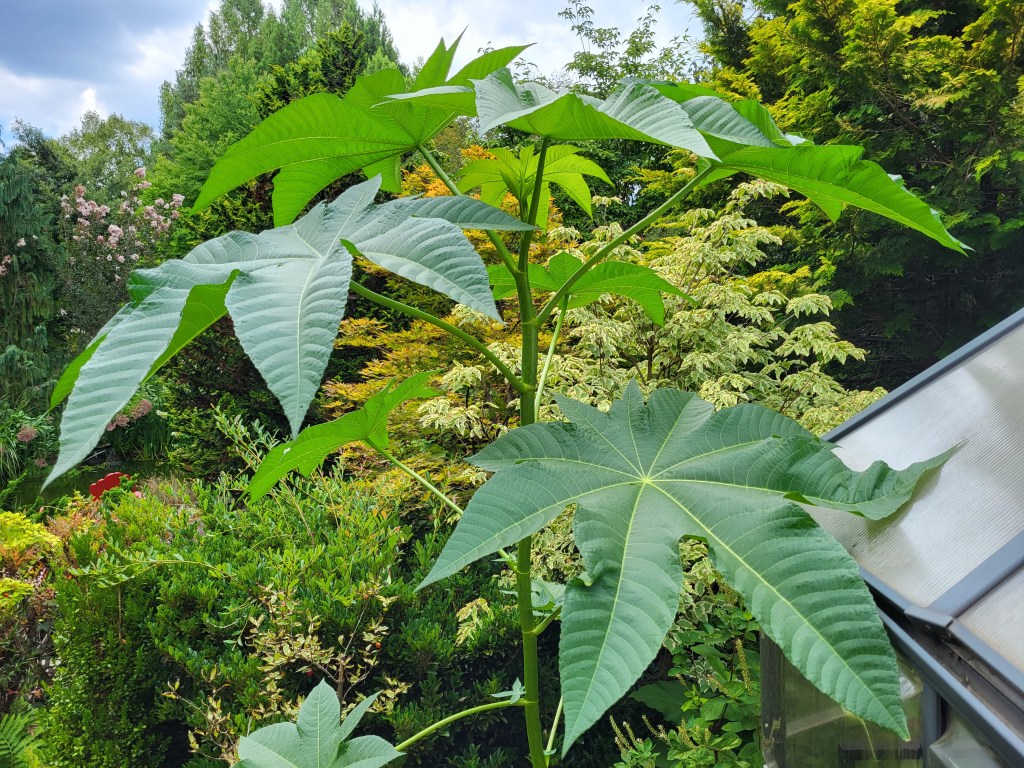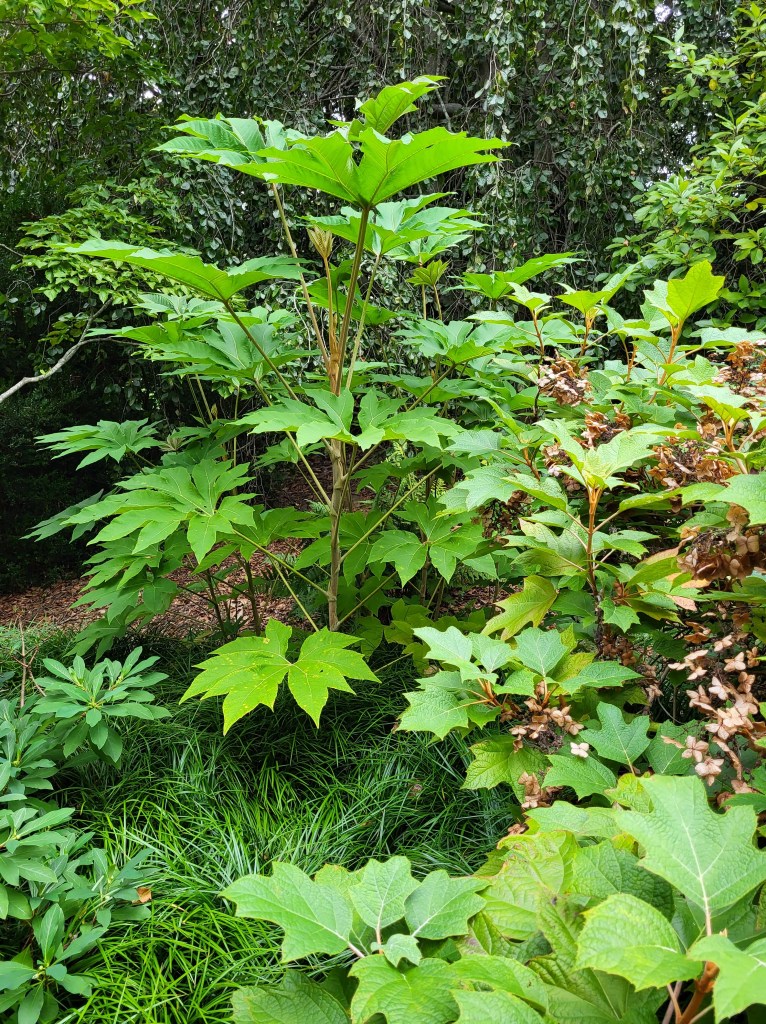A few weeks ago, I marveled that the castor bean had topped the tip of the greenhouse, just over ten feet tall, I guessed. Today, the single trunk and huge leaves stand at least another four feet taller, rising far above the garden, though still dwarfed by a huge beech at the garden’s border. The beech, however, took two decades to reach this height while the castor bean’s growth is a matter of weeks.

A year ago, a castor bean seedling supplied by our son was planted in slightly damp ground in the lower, rear garden where it skyrocketed to nearly knee high by summer’s end, a complete failure with leaves smaller than a hand. Lesson learned, this year another seedling from our son was planted on the dry slope below the greenhouse. The results are clear, and now this must be the annual placement for this highlight that rises above the late summer garden. Yes, all parts of this freakishly tall plant are poisonous, but no one’s eating the bushes around here.

When the castor bean first reached the roof peak, I mentioned that the Japanese Rice Paper plant (Tetrapanax papyrifer ‘Steroidal Giant’, below) was not far behind. And while I am overjoyed that it has also jumped a few feet in recent weeks, it’s been left far behind. Undoubtedly, Jack would choose the castor bean for his climb into the clouds.

While the castor bean has grown as a single, tall trunk, the Rice Paper plant has spread to form a small colony. Fortunately, there’s room for it to spread a bit, but with additional plants I’ve dug one to share with our son. If it decides to spread too far, which it almost certainly will some day, it should be easily controlled by chopping back the spreading rhizomes a time or two each year.

Of course, both the castor bean and Rice Paper plant will crumple to the ground with the first hard freezes. Perhaps the castor bean will flower and provide seeds so I can start my own for next summer, since it’s not cold hardy. The tetrapanax is cold hardy, so it will be begin showing growth by mid-spring, though it won’t amount to much before July. Then, it will take off.